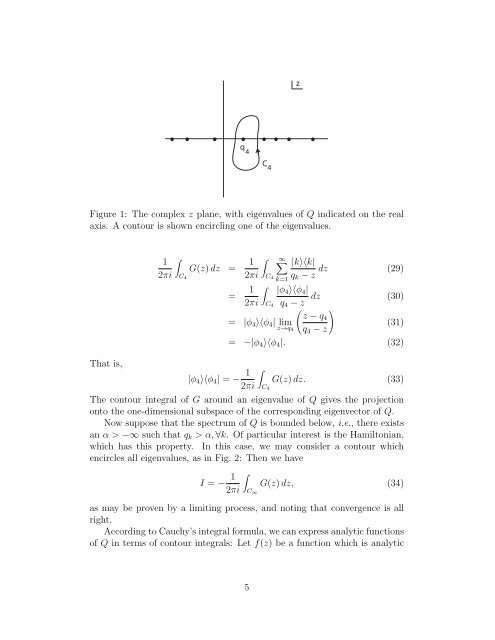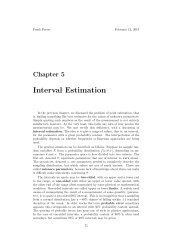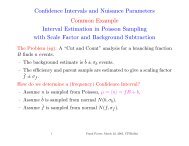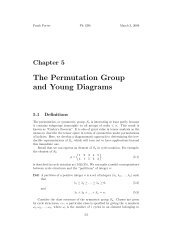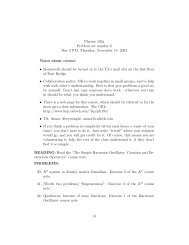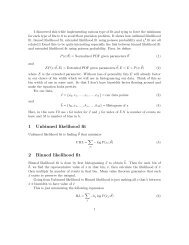1 Introduction 2 Resolvents and Green's Functions
1 Introduction 2 Resolvents and Green's Functions
1 Introduction 2 Resolvents and Green's Functions
Create successful ePaper yourself
Turn your PDF publications into a flip-book with our unique Google optimized e-Paper software.
z<br />
.<br />
. . . . . . .<br />
q 4<br />
C 4<br />
Figure 1: The complex z plane, with eigenvalues of Q indicated on the real<br />
axis. A contour is shown encircling one of the eigenvalues.<br />
That is,<br />
∫<br />
1<br />
G(z) dz = 1 ∫<br />
2πi C 4 2πi C 4<br />
∫<br />
= 1<br />
2πi<br />
∞ ∑<br />
k=1<br />
C 4<br />
|φ 4 〉〈φ 4 |<br />
q 4 − z<br />
|k〉〈k|<br />
dz (29)<br />
q k − z<br />
dz (30)<br />
=<br />
( z − q4<br />
|φ 4 〉〈φ 4 | lim z→q4 q 4 − z<br />
(31)<br />
= −|φ 4 〉〈φ 4 |. (32)<br />
|φ 4 〉〈φ 4 | = − 1 ∫<br />
G(z) dz. (33)<br />
2πi C 4<br />
The contour integral of G around an eigenvalue of Q gives the projection<br />
onto the one-dimensional subspace of the corresponding eigenvector of Q.<br />
Now suppose that the spectrum of Q is bounded below, i.e., there exists<br />
an α > −∞ such that q k > α, ∀k. Of particular interest is the Hamiltonian,<br />
which has this property. In this case, we may consider a contour which<br />
encircles all eigenvalues, as in Fig. 2: Then we have<br />
I = − 1 ∫<br />
G(z) dz, (34)<br />
2πi C ∞<br />
as may be proven by a limiting process, <strong>and</strong> noting that convergence is all<br />
right.<br />
According to Cauchy’s integral formula, we can express analytic functions<br />
of Q in terms of contour integrals: Let f(z) be a function which is analytic<br />
)<br />
5


